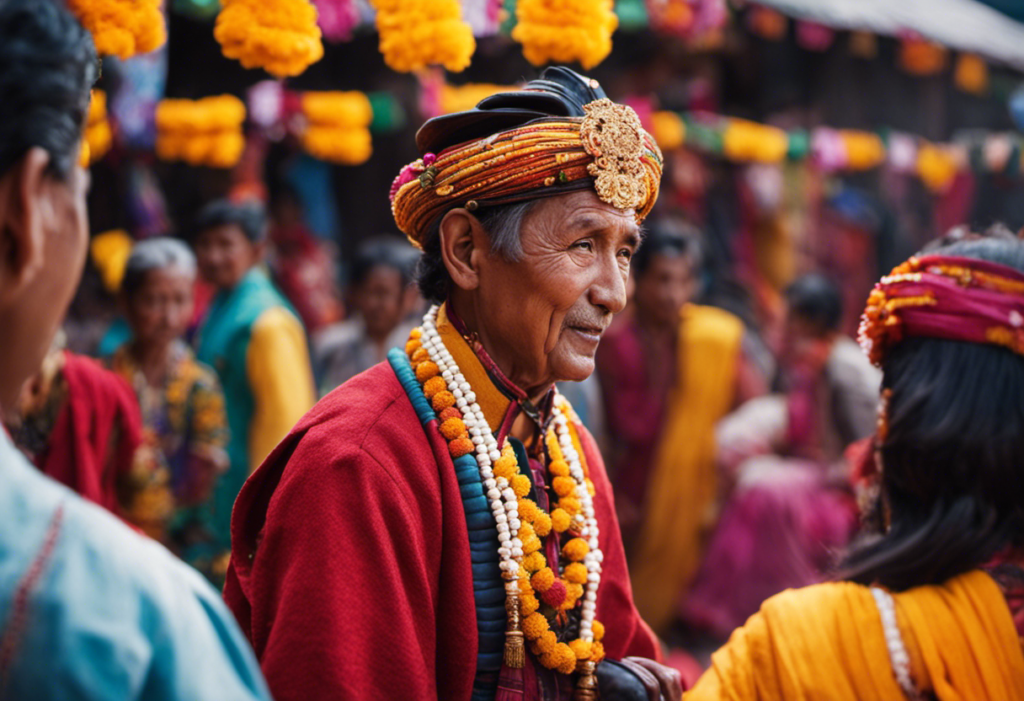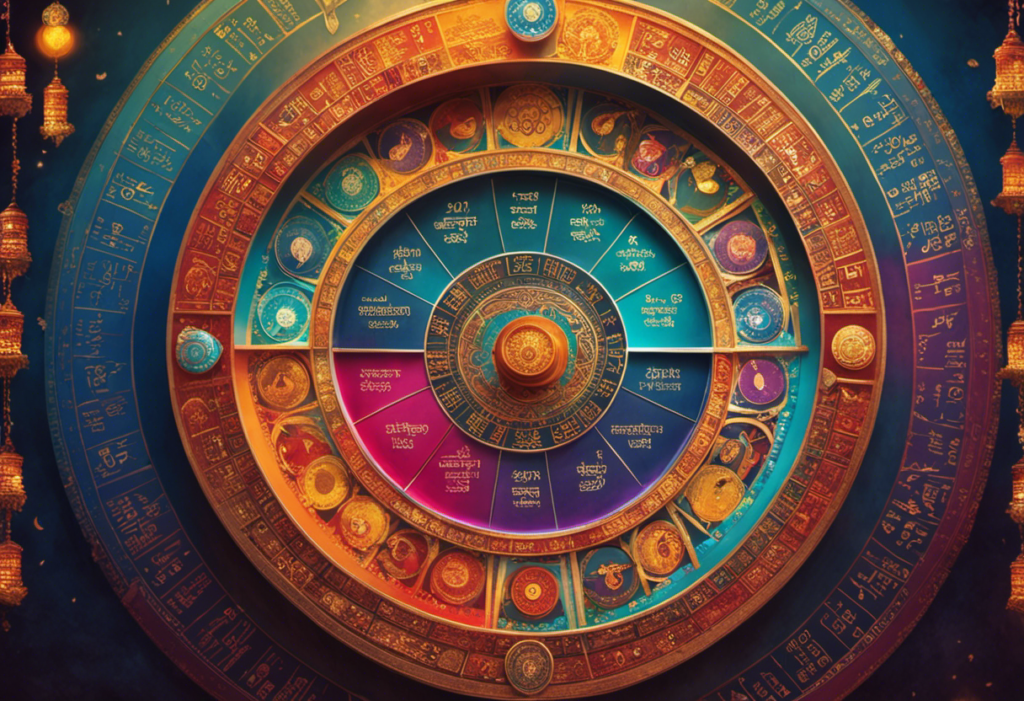Step into the vibrant tapestry of Nepalese culture and explore the dates of significance that mark the country’s rich heritage.
From ancient traditions to elaborate ceremonies, the festivals and rituals on the Nepali Calendar provide a platform for religious devotion and artistic expression.
Join us on a captivating journey through Nepal’s cultural landscape, where cherished customs and captivating traditions come to life.
Key Takeaways
- Festivals and rituals in Nepali society have nationalistic and religious significance.
- They serve as a means to unite family members working abroad and bring communities together.
- Festivals in Nepal are deeply rooted in cultural traditions and provide an opportunity for religious expression.
- Major Hindu festivals in Nepal include Dashain, Tihar, Holi, Maha Shivaratri, and Teej, while major Buddhist festivals include Buddha Jayanti, Losar, Lumbini Festival, Mani Rimdu, and Saga Dawa.
Festivals and Rituals in Nepali Society
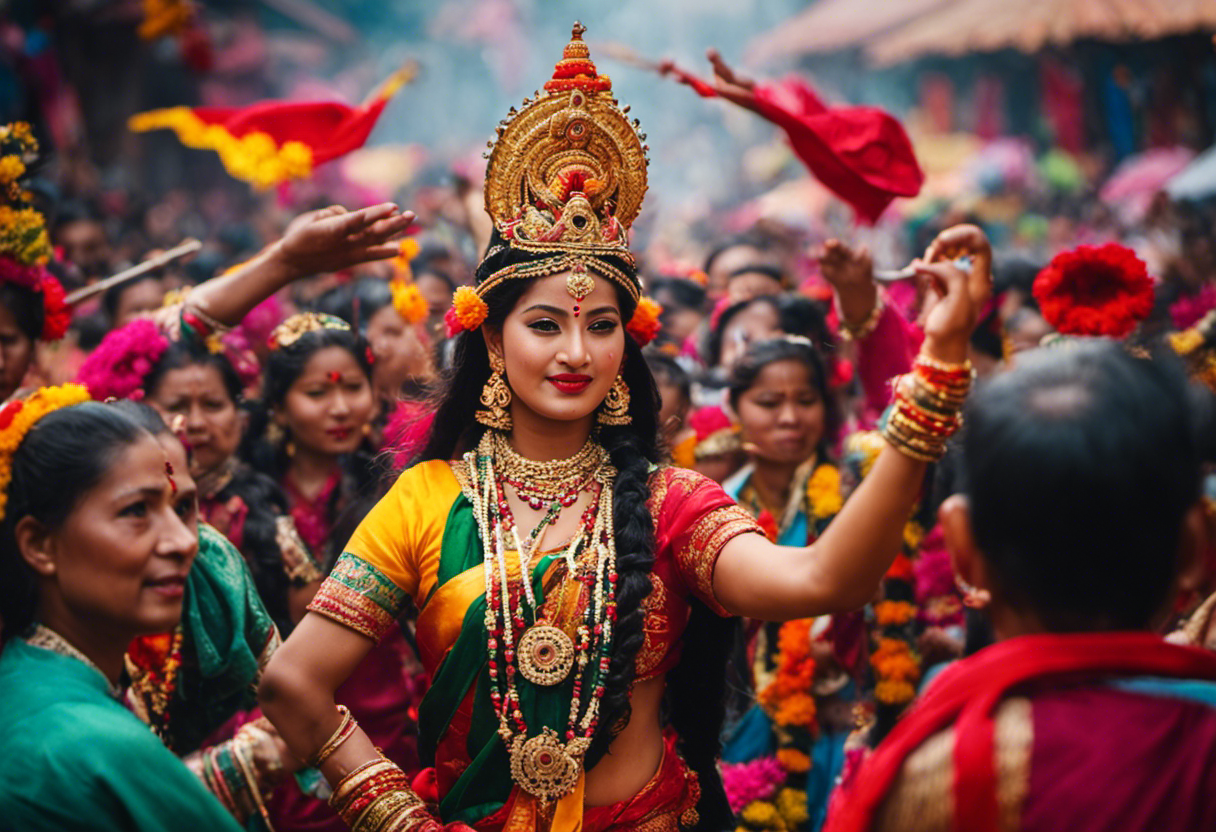

What are the key festivals and rituals that hold cultural significance in Nepali society?
Festivals and rituals play a crucial role in the cultural fabric of Nepali society, serving as important markers of identity, tradition, and community building. These celebrations hold immense importance in the lives of the Nepali people, both religiously and socially.
They bring together individuals and families, fostering a sense of unity and belonging. Festivals provide an opportunity for people to express their religious devotion and showcase various art forms, music, and dance. They also have historical and mythological significance, often incorporating elaborate rituals and ceremonies.
Major Hindu festivals in Nepal, such as Dashain and Tihar, are celebrated with great enthusiasm and are deeply rooted in cultural traditions. Similarly, Buddhist festivals like Buddha Jayanti and Losar hold immense spiritual significance.
These festivals not only strengthen the bond within communities but also reinforce the cultural values and traditions that define Nepali society.
Cultural Significance of Festivals in Nepal
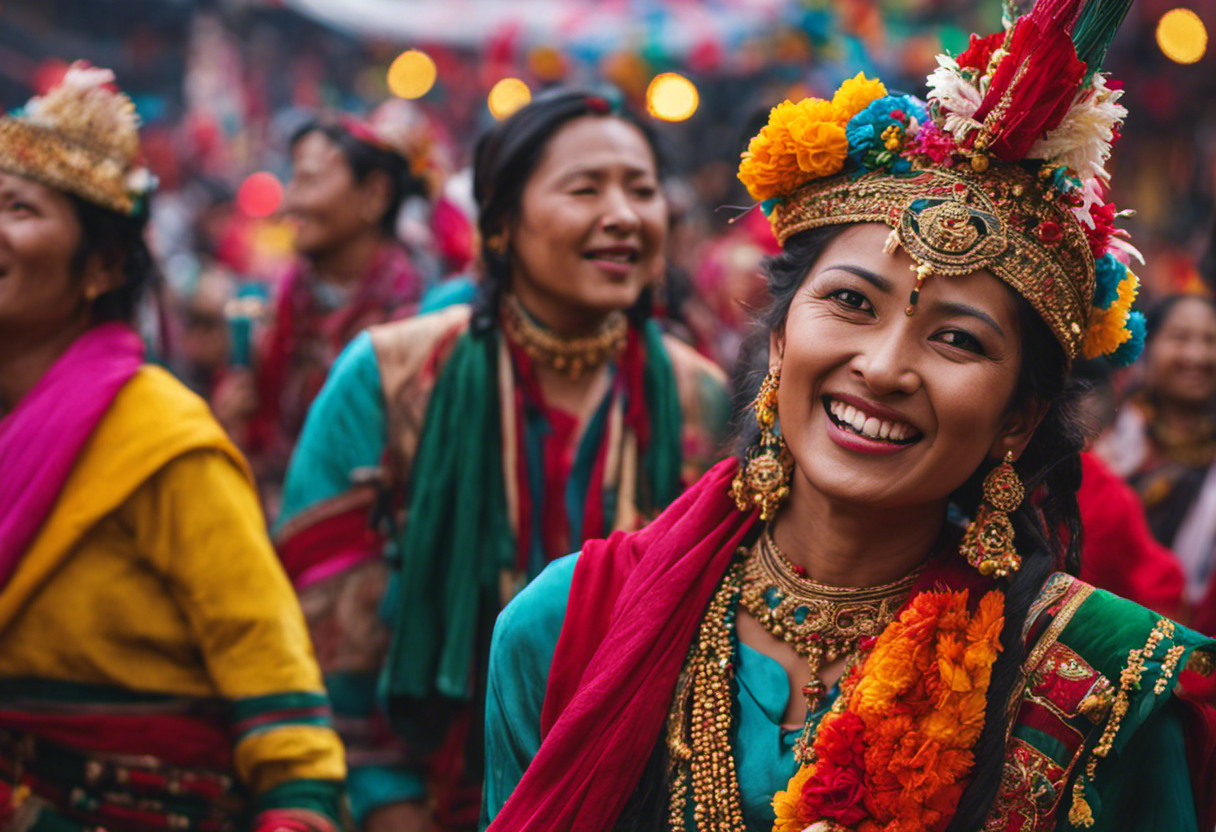

Festivals in Nepal hold immense cultural significance as they provide a platform for individuals to express their religious devotion and showcase various art forms, music, and dance. These festivals are deeply rooted in cultural traditions and often have historical and mythological significance. Celebrations include elaborate rituals and ceremonies that reflect the religious beliefs and values of the Nepali people. The festivals serve as a way for individuals to connect with their spirituality and strengthen their sense of community. Through the display of art forms such as traditional dances, music, and intricate costumes, the festivals become a visual representation of the rich cultural heritage of Nepal. The following table highlights the religious devotion and art forms showcased in some major festivals in Nepal:
| Festival | Religious Devotion | Art Forms Showcased |
|---|---|---|
| Dashain | Worship of Goddess Durga | Traditional dances and music |
| Tihar | Worship of various deities | Rangoli art and traditional songs |
| Holi | Celebration of love and colors | Folk dances and music |
| Maha Shivaratri | Devotion to Lord Shiva | Ritualistic dance performances |
| Teej | Worship of Lord Shiva and Parvati | Women’s folk dances and songs |
These festivals not only provide a platform for religious devotion but also serve as a means of preserving and promoting the diverse art forms of Nepal.
Major Hindu Festivals in Nepal


Among the major Hindu festivals in Nepal, Dashain and Tihar are celebrated with great enthusiasm and devotion. These festivals hold significant importance in Hindu religious customs and are deeply rooted in traditional customs and rituals.
During Dashain, which usually falls in September or October, Nepalese people worship the goddess Durga and celebrate the victory of good over evil.
Tihar, also known as Diwali, is another major festival celebrated in Nepal. It is a time when the goddess of wealth, Laxmi, is worshipped, and people decorate their homes with lights and flowers.
Holi, the festival of colors, is widely celebrated in Nepal, where people play with colored powders and water.
Maha Shivaratri, dedicated to Lord Shiva, is observed with great devotion, and devotees fast and offer prayers to seek his blessings.
These festivals exemplify the rich cultural heritage of Nepal and bring communities together in celebration.
Major Buddhist Festivals in Nepal
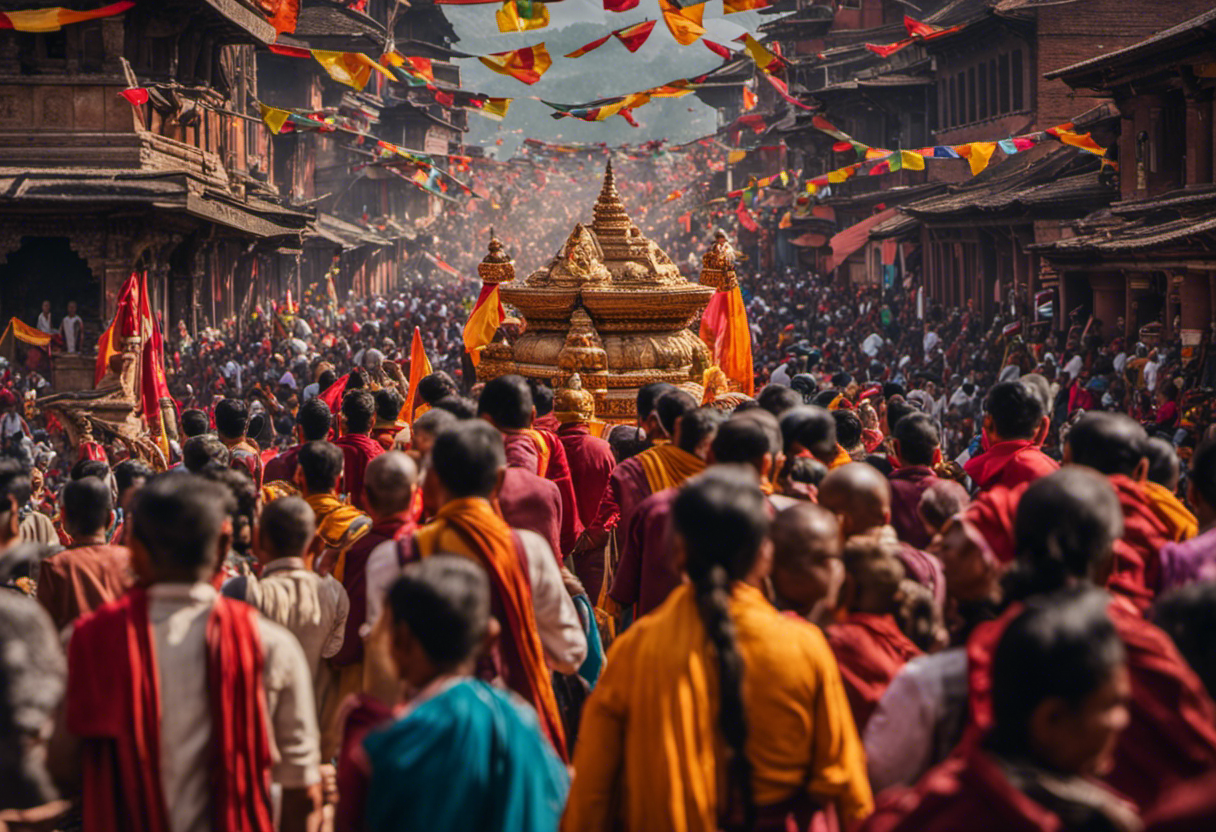

Buddhist festivals hold significant cultural and religious importance in Nepal, as they commemorate key events in the life of Lord Buddha and are celebrated by the Buddhist community. These festivals provide an opportunity for devotees to engage in Buddhist rituals and express their devotion. They also showcase various Buddhist art forms, such as intricate sand mandalas, colorful prayer flags, and mesmerizing masked dances. To further understand the significance of these festivals, let’s take a look at some major Buddhist festivals celebrated in Nepal:
| Festival | Description | Date |
|---|---|---|
| Buddha Jayanti | Celebrates the birth, enlightenment, and death of Lord Buddha | Full moon of May |
| Losar | Marks the Tibetan New Year and is celebrated by the Tibetan community | Varies (February or March) |
| Lumbini Festival | Honors the birthplace of Lord Buddha in Lumbini, Nepal | Varies (December) |
| Mani Rimdu | Unique Sherpa festival celebrated in the Everest region | Varies (October or November) |
| Saga Dawa | Commemorates the birth, enlightenment, and death of Lord Buddha | Full moon of May |
These festivals not only provide a platform for spiritual growth and cultural preservation but also contribute to the vibrant tapestry of Nepal’s diverse traditions and heritage.
Other Festivals and Cultural Events in Nepal
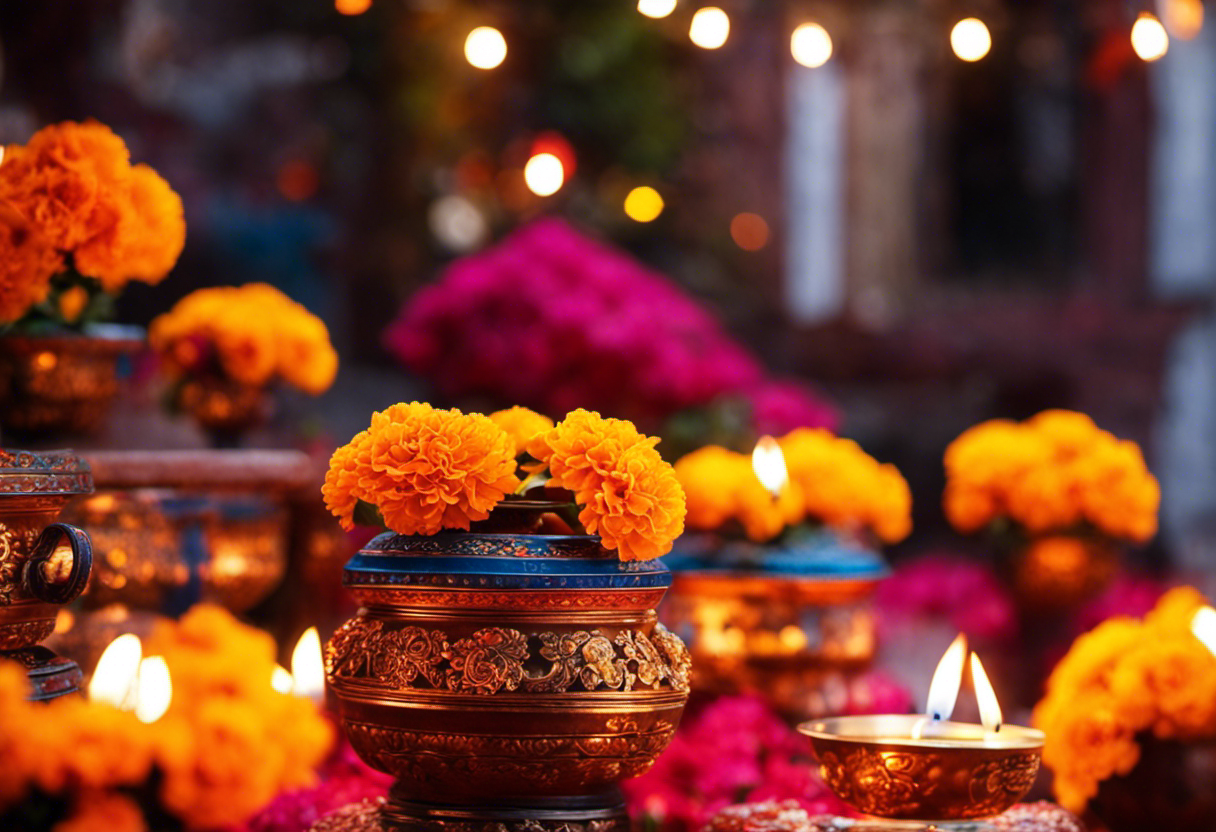

Nepal hosts a multitude of diverse and vibrant cultural events throughout the year, showcasing the rich traditions and customs of its people. Among these events are Ghode Jatra and Gai Jatra, two unique cultural festivals that hold great significance in Nepalese society.
Ghode Jatra, also known as the Festival of Horses, is celebrated in Kathmandu. The highlight of the festival is a thrilling horse race where riders compete fiercely for victory. The festival is believed to ward off evil spirits and bring good luck and prosperity to the city.
Gai Jatra, or the Festival of Cows, is a festival where people remember their deceased loved ones. It is celebrated with processions of cows, believed to help departed souls find their way to heaven. The festival also includes traditional dances, music, and performances that reflect the vibrant and lively culture of Nepal.
These unique cultural events not only provide entertainment and joy to the people but also serve as a reminder of Nepal’s rich cultural heritage.

